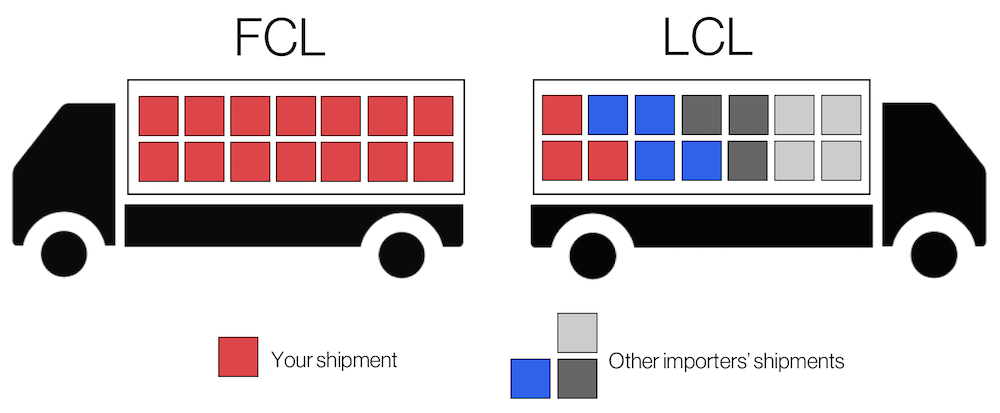Help Center Article
Should I Ship by LCL or FCL?
Trying to decide if you should ship by FCL or LCL? Use these tips to decide.
Should I Ship by LCL or FCL?
It's a common question: Should I ship my freight by FCL (full container load) or LCL (less than container load)? Here are a few factors to consider:
LCL lets you keep inventory low
If you don’t have the money or space to accommodate a full container at your warehouse, it makes sense to use LCL. LCL lets you ship in smaller volumes so that you can keep your inventory lean. Instead of purchasing large quantities from suppliers, you can use LCL to keep a steady flow of inventory in smaller quantities.
FCL may be cheaper than LCL
LCL costs more than FCL per unit of freight. That’s because freight agents prefer a full container load -- it's easier for them than figuring out how to bundle many LCL shipments in a full container.
There is a break-even point at which the price of a large LCL load equals the price of a 20’ FCL container; this will vary depending on where you’re shipping from and the current state of the ocean freight market. Your Flexport team will take this into account when advising you whether to ship FCL or LCL.
LCL makes delivery appointments easier
Many final destinations (including Amazon FBA centers) require a delivery appointment. This can get tricky with an FCL shipment, where you have to get the container picked up, delivered, and returned to the port within about 8 days (before you begin racking up demurrage and/or per diem fees) -- you may not be able to get an appointment within that “free” timeframe.
With an LCL shipment, you have more “free” time -- usually about 5 days at the port, and then 7 or so days at the deconsolidation warehouse. This makes it more likely that you will get a delivery appointment before fees begin accruing.
FCL gets delivered more quickly than LCL
When an FCL shipment arrives at port, it’s unloaded from the vessel and delivered to the buyer.
It’s more complicated for LCL, which requires additional steps: consolidating different shipments, processing multiple documents per container, and then sorting goods for each customer. At each step, there is potential for delay.
LCL makes it easier to split shipments
If you’re delivering to multiple Amazon FBA facilities or to multiple 3PLs, LCL service will allow you to split your shipment, rather than sending multiple full containers.
Flexport LCL Service
Consistent low price
Flexport has its own weekly consol box on hundreds of lanes. This allows us to lock in low rates with the carriers, for consistently below-market rates that are protected from market fluctuation.
Carefully screened cargo
We’re very selective about what goods are consolidated into an LCL shipment -- no hazardous materials, no liquids, no perishables -- which means that if you’re shipping with Flexport LCL, you’ll see a significantly lower risk of inspection and delay than with a traditional LCL provider.
Labeling and palletization services
If you’re selling on Amazon or distributing through a 3PL, they have specific requirements: labeling, palletization, delivery appointments, etc. With Flexport’s LCL service, we can take care of these for you once your cargo reaches the U.S. -- our warehouses are equipped and trained to meet Amazon FBA standards, as well as most (if not all) of the major 3PLs in the US.
Talk to your Flexport team
When in doubt, ask your dedicated account management team -- we'll be happy to discuss the pros and cons of LCL vs. FCL within the context of a particular shipment.

